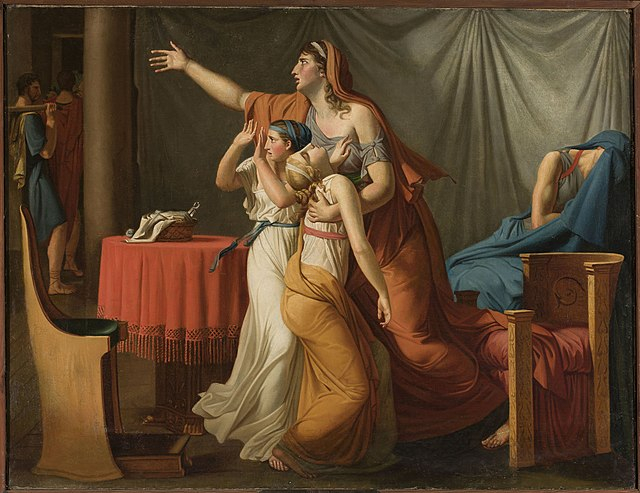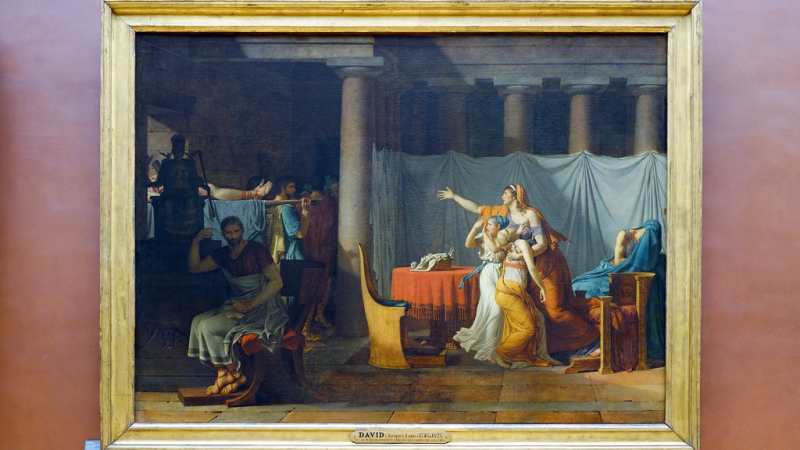The Lictors Bring to Brutus the Bodies of His Sons
Without taking into account Jacques-Louis David, the French Revolution is difficult to explain. His art gives unmatched insight and is inextricably political, making him a pivotal player in the revolution. The Lictors Bring to Brutus the Bodies of His Sons is produced in 1789 and rated one of the most famous paintings inspired by the French revolution.
The painting shows Brutus and his family after the passing of his two sons. To preserve the Roman Republic, Brutus gave the order to kill them in an act of civic self-sacrifice. When the French Revolution first began, this theme was significant, and David's work was very well-liked. Although it was first turned down by the Salon, public outcry led to its display.
It serves as an example of how the old and new worlds, or monarchy and republic, are in conflict. The use of cool, dark colors and the morally conscientious distribution of light distinguish the picture as being Neoclassical. While his wife and daughters tremble in the light at the horror, Brutus sits by himself in the shadows. Although his choice has made him feel alone and unhappy, the republican statue to the left shows how valuable his sacrifice was. The brushstrokes are hardly noticeable, like in typical Neoclassical artwork, creating a fluid and dynamic image.












